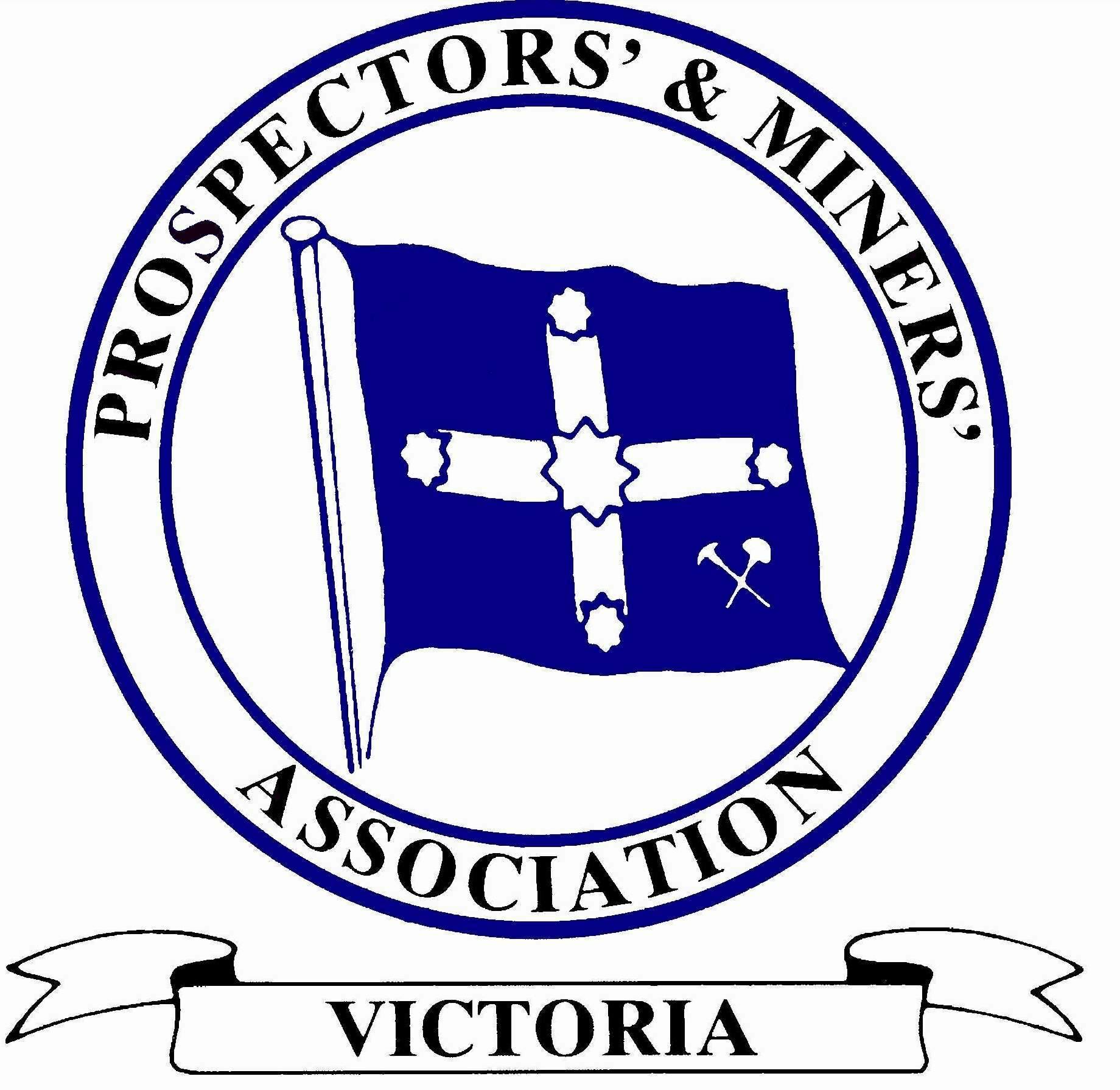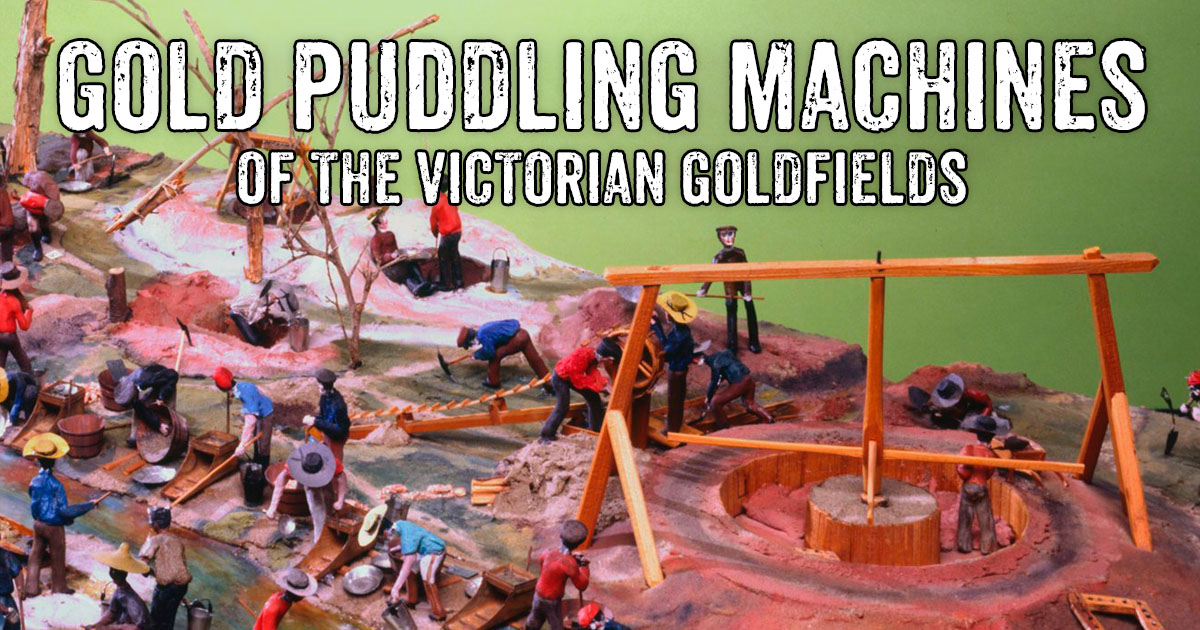
Mining Model - Surfacing & Puddling, Shallow Alluvial Workings, Victoria, circa 1857. Image source: Museums Victoria.
Puddling machines, or "puddlers" were pioneered on the Victorian goldfields in the early 1850s.
This technology was developed as an affordable way of processing gold-bearing clay on a large scale.
Puddling machines are a very significant development in the history of Victorian gold mining, as they are one of the only technologies or methods developed entirely on the Victorian Goldfields.
You can watch the video below on YouTube, or keep reading to learn more!
Why were gold puddlers developed?

Reconstructed gold puddler at the Hard Hill Tourist Reserve, Wedderburn VIC
The characteristic clay earth of the goldfields region posed a problem to the 19th century miners.
Gold was trapped within the hard lumps of clay and in order to retrieve it, these lumps needed to be effectively broken up.
How do gold puddlers work?
A circular trough in the ground, lined with wood or bark, was filled with clay and water.
A horse circled the trough and dragged a harrow through the clay mixture, breaking up the lumps and turning it into a runny sludge.
The gold released from the clay would sink to the bottom, and the watery clay would be drained off from the top.
The residue at the bottom of the trough would then be cleaned up with a pan or cradle to collect the gold.
Gold puddlers throughout the Victorian Goldfields
The remains of these puddling machines can be found scattered in abundance throughout the bushland of the Victorian Goldfields.
Most now appear as little more than ring-shaped depressions in the ground, but are a fascinating testament to the region's prosperous gold digging days.
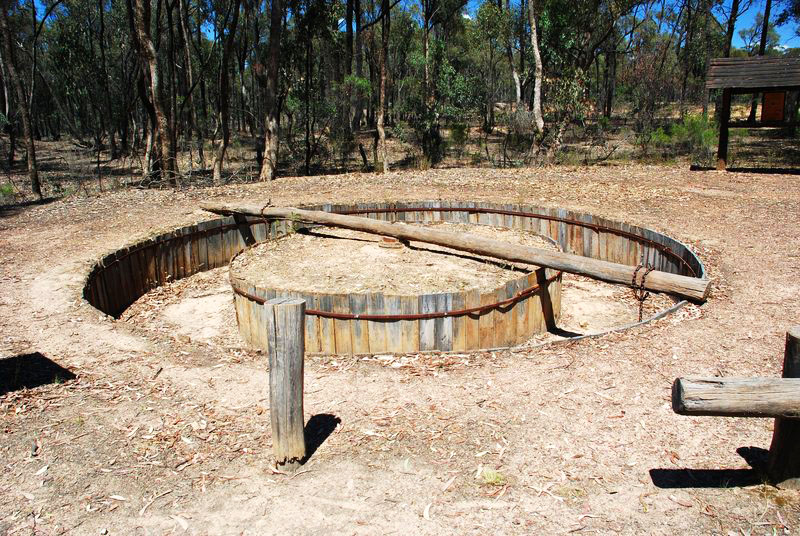
Reconstruction of an original gold puddler at Whroo, Victoria (image source: Victorian Heritage Database)
The Whroo Gold Puddling Machine (pictured above) is a reconstruction of an original machine that had been in operation on the site during the 1950s.
The reconstruction comprises a good characteristic example of the puddling technology developed in Victoria from 1854 (source: Victorian Heritage Database).
Most puddling machines that can be found throughout the bushland of the Victorian Goldfields are now little more than ring-shaped depressions in the ground, and are easily overlooked.
These puddlers are an important part of Victoria's heritage, and must not be disturbed.
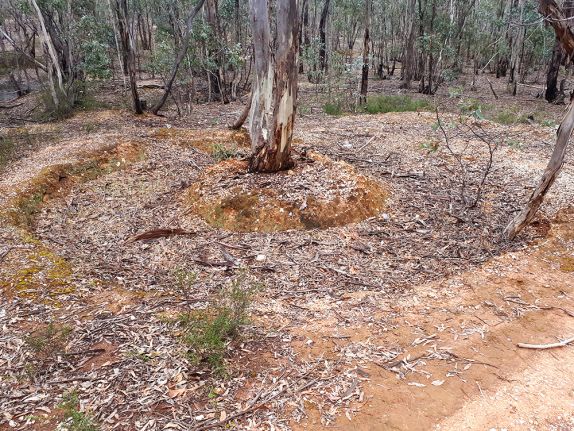
Remains of a puddling machine along the M114 Track, Daisy Hill.
Another puddling machine can be found at the historic Battery Dam and Eucalyptus Distillery just outside Maryborough, as well as the remains of cyanide vats and a couple of impressive boilers.
There are several illustrated information signs at the site.

Informative sign at the Bull Gully Battery Dam and Eucalyptus Distillery near Maryborough.
In nearby Moliagul, you can take a fascinating Discovery Walk around the spot where the famous "Welcome Stranger" gold nugget was unearthed in 1869 by two lucky Cornish miners, John Deason and Richard Oates.
The walk takes you past their puddling site (and other points of interest), although they didn't need their puddler to strike it rich with the Welcome Stranger.
Deason found the world's largest gold nugget buried mere inches beneath the surface while breaking up soil at the claim.

Gold puddler at the the Welcome StrangerDiscovery Walk in Moliagul.
A remarkable mining model was made by Carl Nordstrom, circa 1857, which shows surface and shallow sinkings, puddling and all the modes of washing for gold in use in the various goldfields of Victoria up to 1859.
It is part of a series of ten models depicting aspects of mining techniques on the Victorian goldfields, built between 1857 and 1860, by the Swedish-born miner Carl Nordstrom for Professor Fredrick McCoy, founding director of the National Museum of Victoria (source: Museums Victoria).
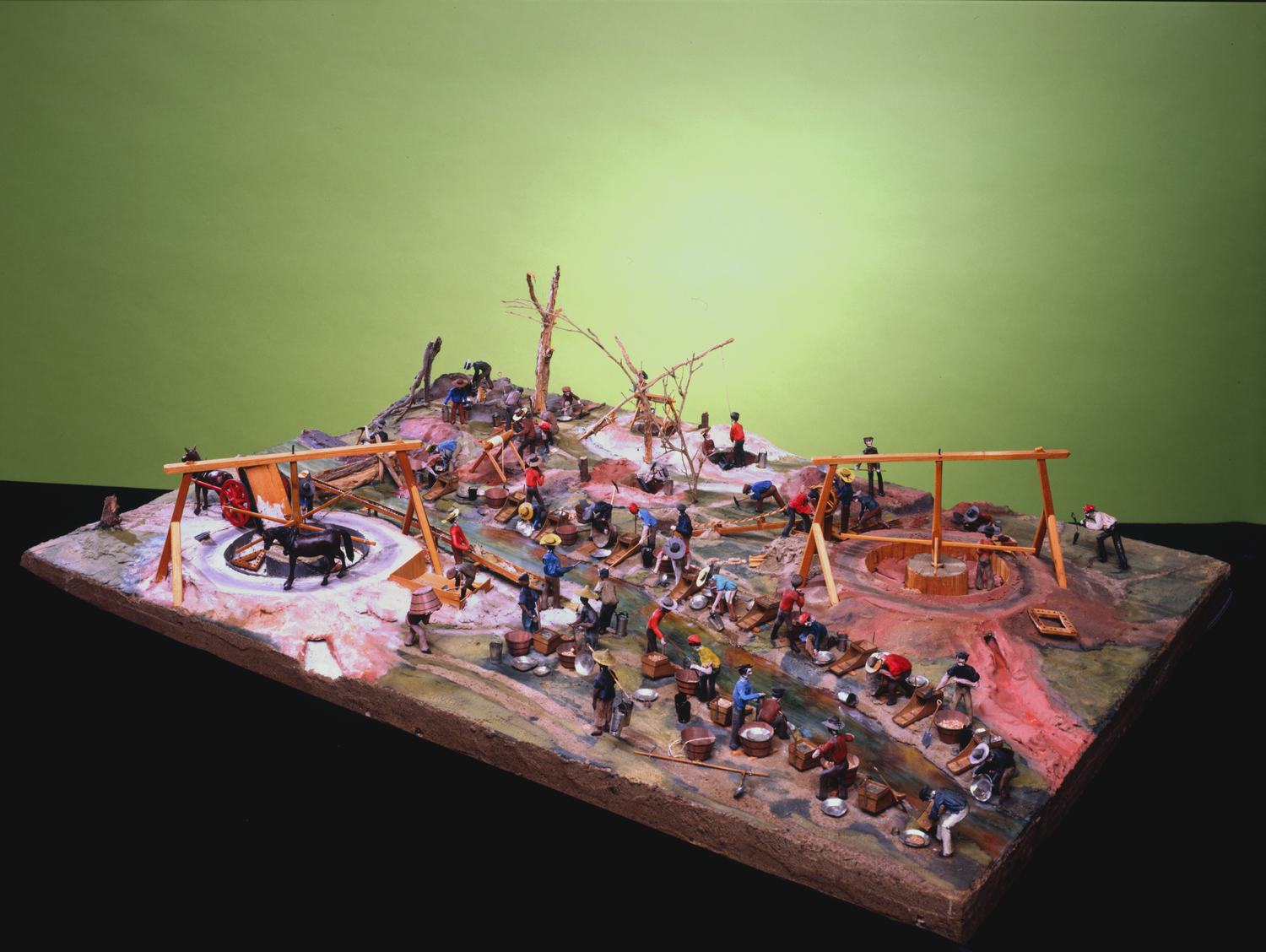
Mining Model - Surfacing & Puddling, Shallow Alluvial Workings, Victoria, circa 1857. Image source: Museums Victoria.
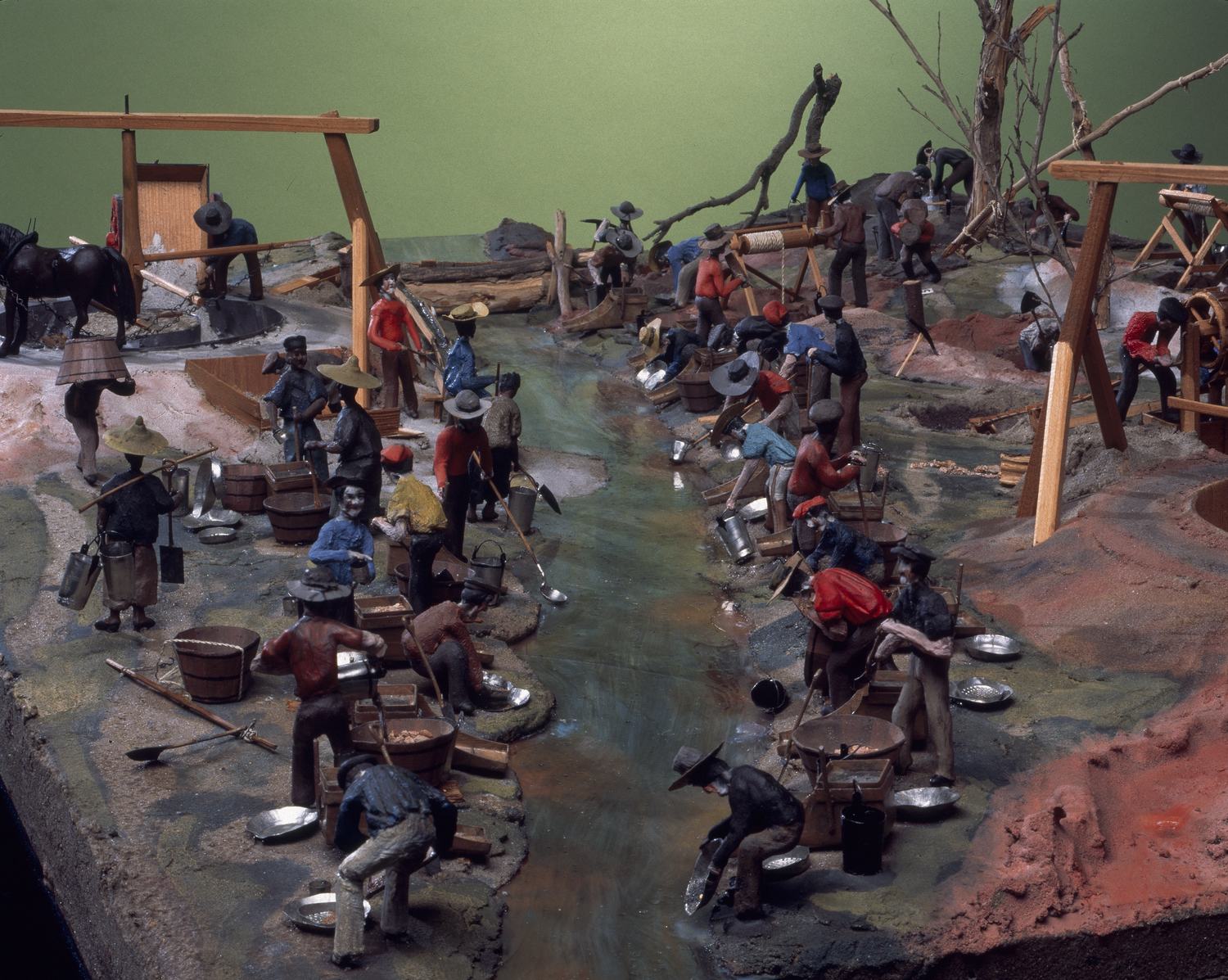
Mining Model - Surfacing & Puddling, Shallow Alluvial Workings, Victoria, circa 1857. Image source: Museums Victoria.

